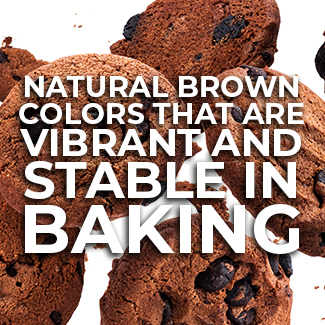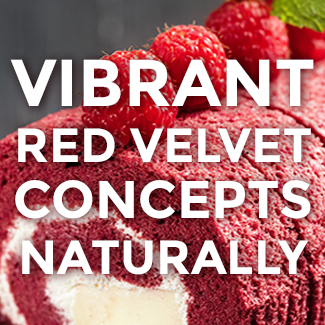Heat Stable Red in Baking
Research indicates that 51% of the total population considers natural color “very” important when it comes to ‘kid-centric’ products such as cereal and certain sweet treats like cookies and cakes. Consumer demand for natural color is having a big impact on product formulations, resulting in many inquiries about natural color conversion from ‘kid-centric’ brands, particularly regarding the replacement of Red #40 in baking and dry grocery. Somewhat surprisingly, Sensient’s consumer research has discovered that Red #40 is the most concerning synthetic colorant for many consumers, particularly younger moms. This conversion has been challenging for developers in the past due to heat, pH and oil instability of some natural sources of red color.
On average, baked goods are between pH 5 and pH 7 and in some cases heating can cause the pH levels to shift even higher. High pH can cause standard Anthocyanins to shift from red to purple. Additionally, the high temperatures of the baking or extrusion processes can cause sources, such as Beet, with a lot of natural sugars to undergo the Maillard reaction, resulting in browning. Lastly, the inclusion of oil in most baked goods can cause Carotenoids like Beta Carotene and Lycopene to shift from red to orange or yellowish orange.
Below are a couple of bake stable options available that make natural color conversion more feasible.
pH Modified Anthocyanins is one solution where acid is added to standard fruit or vegetable juice colors to bring the pH level down in the overall system. This will maintain a raspberry shade throughout the extrusion and baking processes for cereals and cake mixes. It is not a perfect Red #40 replacement, but a good solution for the ‘Red Family’. The addition of acid is not likely to produce off-flavors in cereal. However, custom formulations are recommended for cakes and cereals to ensure the acid added for stabilization does not affect the flavor profile or density.
Sensient’s Heat Stable Beet is a proprietary solution that includes the addition of antioxidants to stabilize the pigment, producing a deep red velvet shade. It is an excellent solution for cake mixes; however the performance in cereal is dependent on the specific extrusion process for each manufacturer. Some processes with extreme heat or pressure can result in browning or color degradation.
Sensient is in the process of developing a ‘next generation’ Heat Stable Beet that will function better in a wider range of extrusion processes, limiting the Maillard reaction and opening the door to more natural cereal conversions. This breakthrough technology will be available soon, so be sure to check back regularly for updates over the coming months.
Please note that any of these solutions can be customized with other natural sources to meet specific shade targets.
Continue to visit my blog to learn about new innovative natural color solutions for Baking and Dry Grocery.








